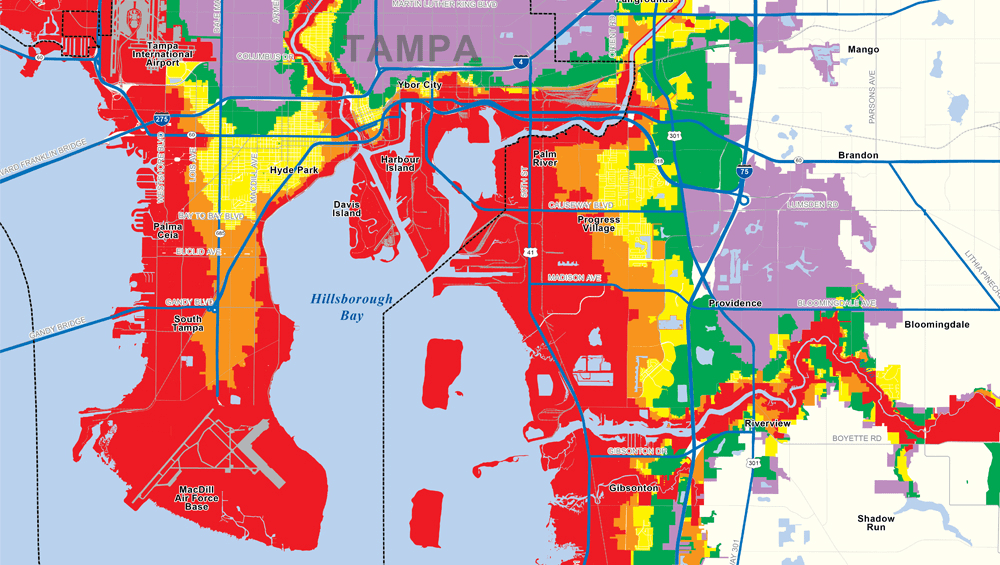Economic Impact of Hurricane Milton: Assessing Damage and Recovery Efforts
The recent landfall of Hurricane Milton has thrust significant portions of Mexico and Florida into the international spotlight, highlighting the devastating capabilities of natural disasters. As communities brace for the long-term implications, this blog post aims to assess the comprehensive damage incurred due to Hurricane Milton while examining the recovery efforts currently underway.
 Overview of Hurricane Milton
Overview of Hurricane Milton
Hurricane Milton formed off the western coast of Mexico and rapidly intensified due to favorable atmospheric conditions. Initially classified as a Category 3 hurricane, it exhibited a minimum pressure of 950 hPa and maximum sustained winds of 120 mph. The hurricane's trajectory also indicated potential impacts for Florida, causing widespread concern among residents and officials alike.
As forecasts indicated an increased likelihood of migration towards coastal areas of Florida, preparation efforts were escalated. Residents watched as the storm's pressure fluctuated, but the strength it showcased upon landfall only intensified the severity of its impact on local economies.
The Economic Toll on Mexico
Mexico bore the brunt of Hurricane Milton's initial assault, with coastal communities experiencing serious infrastructural damage. Early reports indicated that over 200,000 people were displaced as a result of flooding and structural collapses in key urban areas. The economic ramifications of this displacement are severe.
- Damage to Infrastructure
Transportation, utilities, and housing sectors are among the most affected. Many roads have become impassable, further crippling trade and emergency response efforts. Airports have also suspended operations, leading to significant disruptions in both domestic and international travel while curtailing much-needed supply chains. - Impact on Agriculture
Hurricane Milton's heavy rainfall and winds have caused severe damage to coastal and inland agriculture. This will not only pose immediate risks to food supply but could also have long-term effects on crop production, leading to price increases for consumers both domestically and internationally. - Tourism Decline
As a major driver of the Mexican economy, tourism is expected to suffer until reconstruction efforts can successfully rehabilitate affected areas. Initial projections estimate that some local economies could experience a 30% decline in tourism revenue over the next quarter, threatening jobs and livelihoods.
The Financial Cost
Estimating the total economic damage remains a challenging task. Analysts project that initial assessments will place the total figure in the billions of dollars. Government agencies and insurance companies are evaluating damage claims, but early estimates suggest that immediate relief funding will fall short of the required amount, leading to potential delays in recovery efforts.
Future Forecasts for Florida
While the full impact of Hurricane Milton on Florida remains to be seen, early observations highlight concerns. Due to Milton's unpredictable nature, Florida residents have had to remain vigilant as authorities assess the storm's trajectory.
Hurricane Milton's Strength and Wind Speed
As the storm altered course, it maintained hurricane status with recorded wind speeds ranging from 100 to 110 mph across different zones. These wind speeds led to downed power lines, uprooted trees, and damage to residential properties, particularly in low-lying areas. The pressure systems associated with Milton caused instability in the weather, resulting in flash floods and tornadic activity in some regions.
Recovery Efforts: A Collaborative Response
Immediate Actions
In the wake of Hurricane Milton, it is crucial for both Mexico and Florida to focus on efficient recovery strategies. Local and federal authorities are mobilizing resources to maximize their disaster response capabilities.
- Emergency Response Teams
Rescue teams are deploying in affected areas to support evacuations, restore utilities, and provide essential medical services to displaced residents. Temporary shelters have been established to accommodate those in need. - Federal and State Aid
Governments in both Mexico and Florida have activated disaster relief services. Billions have been designated in recovery funds and emergency assistance. These funds are directed toward initiatives aimed at rebuilding, providing healthcare access, and stimulating local economies.
Long-Term Recovery
Reconstruction after a hurricane is a multi-faceted endeavor that requires careful planning and sustained investment. Acknowledging the lessons from previous disasters, it is imperative that recovery efforts focus on building resilience.
- Infrastructure Resilience
Investment in disaster-resistant infrastructure is essential. Upgrading utilities and transportation systems to withstand future storms should be a priority in the recovery phase. This approach not only protects against future disasters but also ensures greater economic stability for the affected regions. - Economic Diversification
In light of the heavy reliance on tourism and agriculture, diversifying local economies will be integral to achieving long-term stability. Fostering sectors such as technology, renewable energy, and healthcare can create more balanced economic profiles, making communities less vulnerable to singular industry downturns. - Community Engagement
Local community involvement will be vital in steering recovery efforts. Participatory approaches can help ensure that rebuilding programs consider the specific needs and experiences of community members, furthering social cohesion and facilitating long-term recovery.
Conclusion
The damage caused by Hurricane Milton has set in motion a significant economic crisis for both Mexico and Florida. As communities rebuild and recover, it is essential to focus on resilience while acknowledging the critical importance of thorough planning and investment. The challenges are bound to test local economies, but with collaborative efforts, innovative thinking, and inclusive practices, better days are indeed on the horizon.
As future forecasts continue to evolve, vigilance remains paramount. By focusing on preparation and recovery, both Mexico and Florida can emerge from this disaster with renewed strength, ready to face whatever challenges may arise in the years to come.